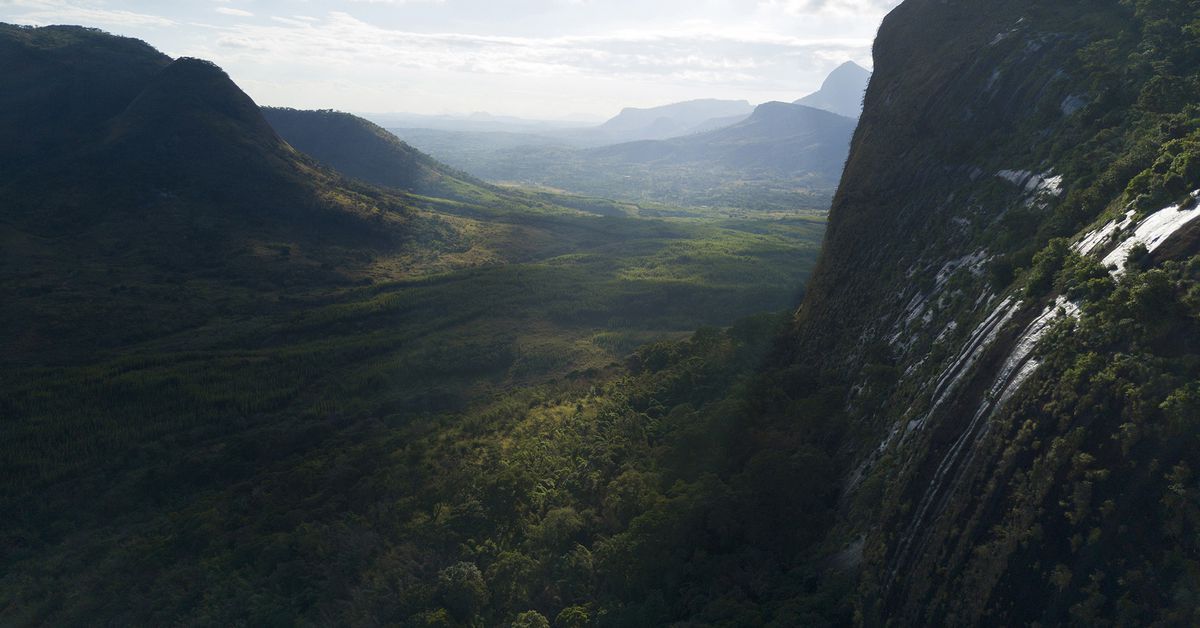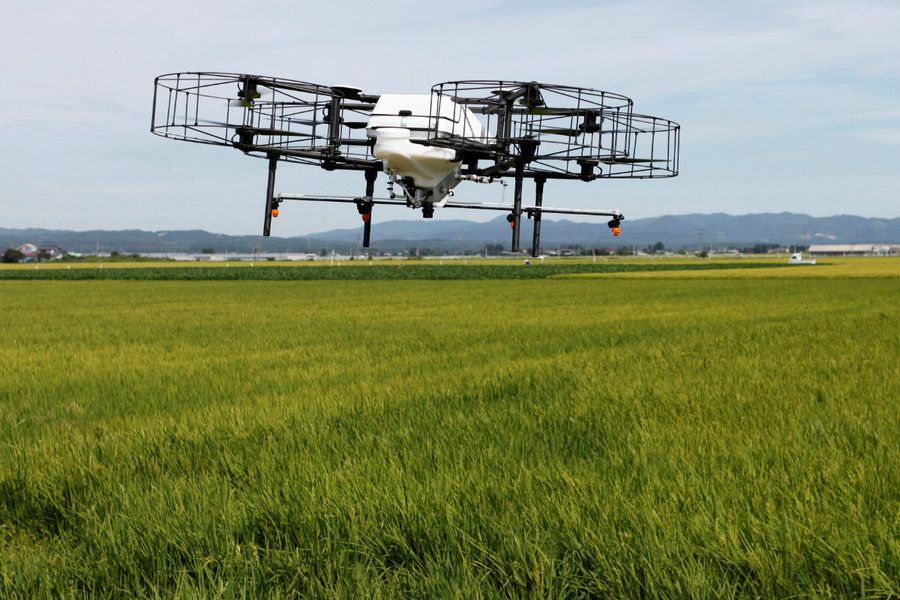It’s designed to make collecting drones of all sizes much easier.
Category: drones – Page 132
Internet by Google Balloons & Facebook Drones (Project Loon & Project Aquila)
This video is the second in a three-part series discussing global internet connectivity. In this video, we’ll be discussing the Earth-based, more specifically, stratosphere based initiatives to bring internet connectivity to the entire planet.
[0:30–5:30] Starting off we’ll take a look at Google’s bid to bring internet connectivity to the planet, dubbed, Project Loon. As well as, the importance of a hyper-connected society, for example, aiding in disaster relief efforts.
[5:30–9:30] Following that we’ll take a look at Facebooks initiative titled, Project Aquila. As well as, discuss the benefits of each initiative in bringing connectivity to the planet.
Subscribe ➤ http://subscribe.singularityprosperity.com/youtube
Inside the United Nations’ effort to regulate autonomous killer robots
Amandeep Gill has a difficult job, though he won’t admit it himself. As chair of the United Nations’ Convention on Conventional Weapons (CCW) meetings on lethal autonomous weapons, he has the task of shepherding 125 member states through discussions on the thorny technical and ethical issue of “killer robots” — military robots that could theoretically engage targets independently. It’s a subject that has attracted a glaring media spotlight and pressure from NGOs like Campaign to Stop Killer Robots, which is backed by Tesla’s Elon Musk and Alphabet’s Mustafa Suleyman, to ban such machines outright.
Gill has to corral national delegations — diplomats, lawyers, and military personnel — as well as academics, AI entrepreneurs, industry associations, humanitarian organizations, and NGOs in order for member states to try to reach a consensus on this critical security issue.
The subject of killer robots can spark heated emotions. The Future of Life Institute, a nonprofit that works to “mitigate existential risks facing humanity” such as artificial intelligence, launched its sensationalistic short film Slaughterbots at a side event hosted by the Campaign to Stop Killer Robots at the CCW’s meetings last November. The film, which depicts a dystopian near-future menaced by homicidal drones, immediately went viral.

How Google Earth led a team of scientists to discover an untouched mountaintop rainforest
In 2018, what is left to explore in the world? It seems unlikely, say, that humans might find an untouched forest to study, someplace that hasn’t been bulldozed and burnt and exploited within an inch of its life for precious minerals or virgin timber. But that’s exactly what happened this past spring, when a Welsh researcher, Dr. Julian Bayliss, led a 28-person team that included scientists specially selected for their different talents as well as logistics experts, rock climbers, and filmmakers to the top of a mountain in Mozambique.
The story of the Mount Lico expedition began six years ago when Bayliss, a conservation scientist and butterfly expert, happened to spy a small forest atop a mountain using Google Earth. It wasn’t the first time he’d found such a place; Bayliss had been using Google Earth to explore high-altitude rainforests in Africa for around 15 years. In February 2017, the time was finally right: Bayliss brought a drone to the base of the 410-foot sheer rock protuberance (technically known as an inselberg) to confirm that there was a forest on top. This was no small feat. The area surrounding Mount Lico is a patchwork of smallholder farms, tea and eucalyptus plantations, and woodlands. There are no paved roads, no hotels — just rivers to cross, plants to hack away with machetes, and miles of dirt track to navigate.
While locals were aware of Mount Lico and used the natural resources of surrounding forests, its tall, sheer walls meant that it was nearly impossible to access, which made it likely that the land on top was untouched by humans. However, scientists would later find out that someone had been up there at least once.

The drones that have become part of China’s military strategy
China’s PLA, or People’s Liberation Army, is actively trying to make advances in military robotics and unmanned systems. It now has a range of unmanned aerial vehicles, or drones, in use across its army, navy, air force and rocket force – the military’s strategic and tactical missiles unit. Here are some of them.
The PLA ground force has a number of UAVs that are primarily smaller, more tactical models and are often used for battlefield reconnaissance and targeting artillery fire to improve precision strikes. A significant proportion of these are part of a series produced by the Xian Aisheng Technology Group. The fixed-wing drones have a conventional design with a mid-wing configuration and are used to support the artillery.
The navy generally uses smaller, tactical drones but it also has a limited number of sophisticated reconnaissance UAVs, notably this medium-altitude, long-endurance model. Roughly comparable to the US Global Hawk, it has a maximum range of 2,400km and a maximum endurance of 40 hours. It has been operating in the vicinity of the East China Sea since at least 2013 and there were also reports in 2016 that it had been deployed to Woody Island in the South China Sea – both disputed territories.
Warfare, rap & shaking hands with Putin: Meet the Russian robots’ futuristic advances
Russian engineers this week unveiled the first undersea drone armed with a rifle. The robot is the latest in a line of Russian-made machines conquering battlefields, surgeries, and even the entertainment industry.
With robots set to play an increasingly significant role in our world, engineers from across the globe are developing new types of machines to automate everything from warfare to healthcare. Russia is no exception and is leading the development of robotic systems in some fields.
Do Not Fear the Drones Air-Dropping 50,000 Mosquitoes From Above
On an early spring morning, a humming drone hovered over a small town in Bahia, Brazil. Three hundred feet above ground, a small canister clicked open, ejecting its contents into the mouth of the release mechanism below. For a moment, there was silence. Then, a swarm of mosquitoes, freshly awoken from icy slumber, stretched their wings and took flight.
Each specimen was male, single and ready to mingle—and if all went as planned, the buzzing horde of eager virgins would steadily infiltrate the local mosquito population, coupling up with thousands of lucky ladies in the days to come.
Considering that there are about 100 species of mosquito that carrying deadly human pathogens—including parasites that cause malaria, as well as Zika, dengue and West Nile viruses—this may sound like the horrifying start to an apocalyptic science fiction film à la Outbreak. But it’s quite the opposite: The mosquitoes unleashed in this experiment may be some of the best weapons against the spread of infectious disease.
IBM Files Patent For a Coffee Delivery Drone
It would know when you need a caffeine boost and fly over with your fancy coffee.

Solar-powered quadcopter drone takes flight
A university in Singapore has conducted one of the first practical flights of a solar-powered quadcopter drone.
The prototype has flown as high as 10 meters (about 33 feet) in test flights using solar power with no battery or other energy storage on board, according to the National University of Singapore (NUS), which announced that an engineering team had conducted the test flight.
“Rotary winged aircraft are significantly less efficient at generating lift compared to their fixed wing counterparts [so] a viable 100 per cent solar rotary aircraft that can take-off and land vertically remains a major engineering challenge to date,” the university said in a statement.
